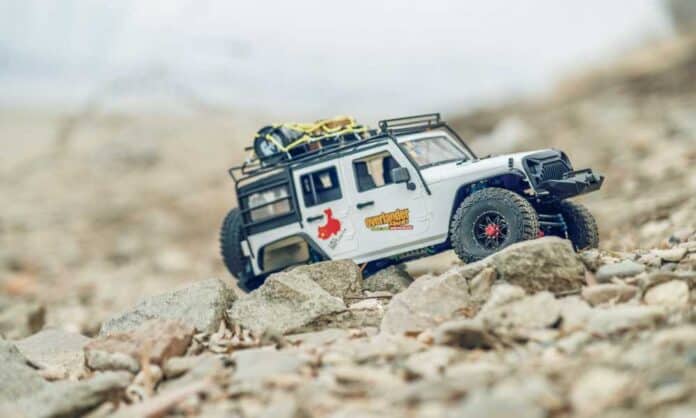Off-roading is an exciting and challenging activity that requires a lot of skill, experience, and a well-equipped vehicle. To conquer the toughest trails and terrains, you need an off-road vehicle that is reliable, capable, and powerful. Whether you are a seasoned off-roader or a newbie, there are certain factors that you need to consider when upgrading your vehicle to make it unstoppable on any off-road adventure. So, here we will discuss 7 features to ensure your off-road vehicle is unstoppable.
Suspension
The suspension is one of the most important factors when upgrading your off-road vehicle. Your vehicle’s suspension system determines how well it can handle rough terrains and obstacles. A good suspension system will provide stability, comfort, and control on any terrain, making your off-road vehicle unstoppable. When upgrading your suspension, consider the type of off-roading you will do. For example, consider a long-arm suspension system if you are doing a lot of rock crawling. If you are doing a lot of high-speed runs on dirt trails, consider a performance suspension system.
Ground Clearance
Make sure there is enough space between the underside of your vehicle and the terrain if you intend to travel in difficult terrain. Without good ground clearance, climbing over rocks, stones, and stumps could cause catastrophic underbody harm. Additionally, you may notice yourself high-centring quite frequently as the underside of your car collides with objects.
Tires
Tires are another critical component of your off-road vehicle. The right rims and tires can make all the difference in your vehicle’s performance on any terrain. When selecting tires for your off-road vehicle, you should consider the terrain you will be driving on, the size of your wheels, and your car’s load capacity. For example, if you are going on rocky terrain, consider tires with a thicker sidewall to protect against punctures. If driving in muddy conditions, feel tires with aggressive tread patterns for better traction.
If you are hauling heavy loads, consider tires with a higher load capacity. Swapping for aftermarket wheels and tires is one of the most common upgrades to off-road vehicles. Choosing the proper wheels goes far beyond the visual appeal because the faulty units may cause many problems and crack due to impact. All these things should matter when choosing the proper set of 20-inch alloy rims.
Armor
Off-roading can be tough on your vehicle, so protecting it with armour is important. Armour includes skid plates, rock sliders, and other protective components that shield your vehicle from damage caused by rocks, tree stumps, and other obstacles on the trail. When selecting armour for your off-road vehicle, you should consider the type of terrain you will be driving on and the beautiful and dangerous hazards you may encounter. For example, if you are going on rocky terrain, consider a skid plate that covers the underside of your vehicle to protect the engine, transmission, and other vital components.
Check out: Mistakes That Can Lead You To Rent the Wrong Type of Car
Winch
A winch is a must-accessory for any serious off-roader. A winch can help you recover your vehicle when it gets stuck in mud, sand, or snow. It can also help you pull yourself out of a tricky situation when no trees or other vehicles are around. When selecting a winch for your off-road vehicle, you should consider the weight of your vehicle and the type of terrain you will be driving on. Consider the winch cable’s length and strength.
Skid plates
Skid plates protect the vehicle’s undercarriage from rocks, logs, and other debris that can damage the engine, transmission, or other critical components. Off-road vehicles should have skid plates that cover the front and rear differential, transfer case, fuel tank, and other vulnerable areas. Steel or aluminium plates are popular choices, and some off-road vehicles come with factory-installed skid plates.
Air intake
An off-road vehicle’s air intake system should be designed to prevent dust, dirt, and water from entering the engine. Upgraded air filters, air intake snorkels, and airboxes can increase airflow while keeping out debris and water. A high-quality air intake system can also improve engine performance and fuel efficiency, especially when driving at high altitudes or dusty environments.
Lighting
Off-roading requires you to drive in low light conditions, and that’s why lighting is an important factor to consider when upgrading your off-road vehicle. Good lighting can help you see better in the dark and make your vehicle more visible to other drivers on the trail. When selecting lighting for your off-road vehicle, you should consider the type of terrain you will be driving on and the amount of light you need. For example, if you are going on narrow trails with many twists and turns, consider a light bar that provides a wide beam of light.
Conclusion
Owning an off-road vehicle requires careful consideration of its capabilities and the terrain it will be driven. By considering these factors, you can navigate difficult terrain and overcome obstacles. Whether you’re a seasoned off-roader or just starting, it’s important to always be prepared for any situation that may arise while off-roading.

